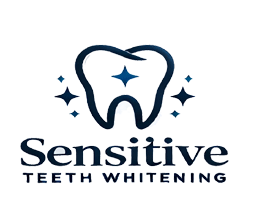Whitening your teeth can brighten your smile. It can lift your mood. If you have sensitive teeth, teeth bleaching may seem hard. There are safe methods for sensitive teeth that work well and keep pain low. In this article, we list ways to whiten without pain and keep your dental care strong.
Understanding Tooth Sensitivity and Bleaching
When enamel wears away, the dentin or roots show. This loss makes teeth react to hot, cold, sour, or sweet food. Regular bleaching gels, high in hydrogen peroxide, may hurt sensitive teeth. Safe bleaching for sensitive teeth uses milder formulas. These methods help keep teeth safe while lightening them.
Why Choose Safe Bleaching for Sensitive Teeth?
Using the right method matters if you wish to avoid pain and care for your enamel. Safe methods bring these benefits:
- Reduced pain from milder chemicals.
- Strength kept in the enamel.
- Slow lightening that feels kind to nerves.
- More ease in finishing the treatment.
Effective Methods for Safe Bleaching
Below are tested methods for safe whitening when teeth are sensitive:
1. Use Desensitizing Whitening Toothpaste
Begin with a toothpaste that soothes sensitivity and whitens. Most contain potassium nitrate or fluoride. These ingredients calm nerve signals and strengthen the enamel. The whitening is soft but helps lower stains and pain over time.
2. In-Office Whitening with Custom Treatment
A dentist can set up a treatment for sensitive teeth. They mix lower gel strength with protective gels or numbing creams to guard the nerves. The dentist may add fluoride on the teeth afterward. This step helps keep the enamel strong and lowers discomfort.
3. Take-Home Whitening Kits with Lower Peroxide
Dentists also give take-home trays. These use gels with a low dose of carbamide or hydrogen peroxide. The trays fit well and work softly. They include agents that calm sensitivity while whitening.
4. Whitening Strips for Sensitive Teeth
Some retail strips are made for sensitive teeth. They hold less active gel and add soothing ingredients like aloe or chamomile. They are simple to use without a prescription.
5. Natural and Alternative Whitening Methods
Some home methods like oil pulling with coconut oil or brushing with baking soda can lift surface stains. They work slowly but keep discomfort low. These methods are not as quick as dentist-approved products.

Tips to Lower Sensitivity During Bleaching
To keep pain low, try these steps:
- Use products marked as safe for sensitive teeth.
- Skip products with high peroxide doses.
- Follow time limits and slowly build up if you feel fine.
- Rinse with fluoride or brush with fluoride toothpaste before and after.
- Skip very sour or hot and cold foods during the process.
- Spread out treatments over several days.
- Keep up good oral care to avoid added sensitivity from gum issues.
What to Expect with Safe Bleaching
During treatment, you might feel a slight tingle or brief sensitivity. These feelings usually fade in a few hours or days. Steady use and slow progress work best. It may take a few weeks to see a brighter smile with low pain.
Frequently Asked Questions
Q1: What is the best whitening product for sensitive teeth?
A product that holds a low peroxide dose and adds soothing agents like potassium nitrate or fluoride works well. Dentist-made kits, whether for home or office, give good results with less pain.
Q2: Can safe bleaching for sensitive teeth be done at home?
Yes, many home options work well for sensitive teeth. Whitening strips and low-dose gels are common choices. Ask a dentist first to be sure you use the right product.
Q3: How long does it take to see results with safe bleaching?
Results vary by product. Usually, a few weeks of steady use show a difference. The lightening is slow but keeps discomfort low.
Conclusion
Safe whitening for sensitive teeth is possible with the right methods. Choosing formulas that care for your enamel and ease nerve pain helps you get a bright smile without worry. With a dentist’s advice and careful use, you can have a pleasant whitening session.
For a brighter smile that keeps you at ease and safe, look at safe bleaching choices for sensitive teeth today. Ask your dentist about the best fit for you. Your path to a pain-free, bright smile starts with a simple check-up!
For more guidance on safe teeth whitening, the American Dental Association has clear details on their Teeth Whitening Guide (https://www.ada.org/resources/research/science-and-research-institute/oral-health-topics/teeth-whitening).
Brighten your smile with care—choose safe whitening for sensitive teeth and enjoy a gentle lightening process!




